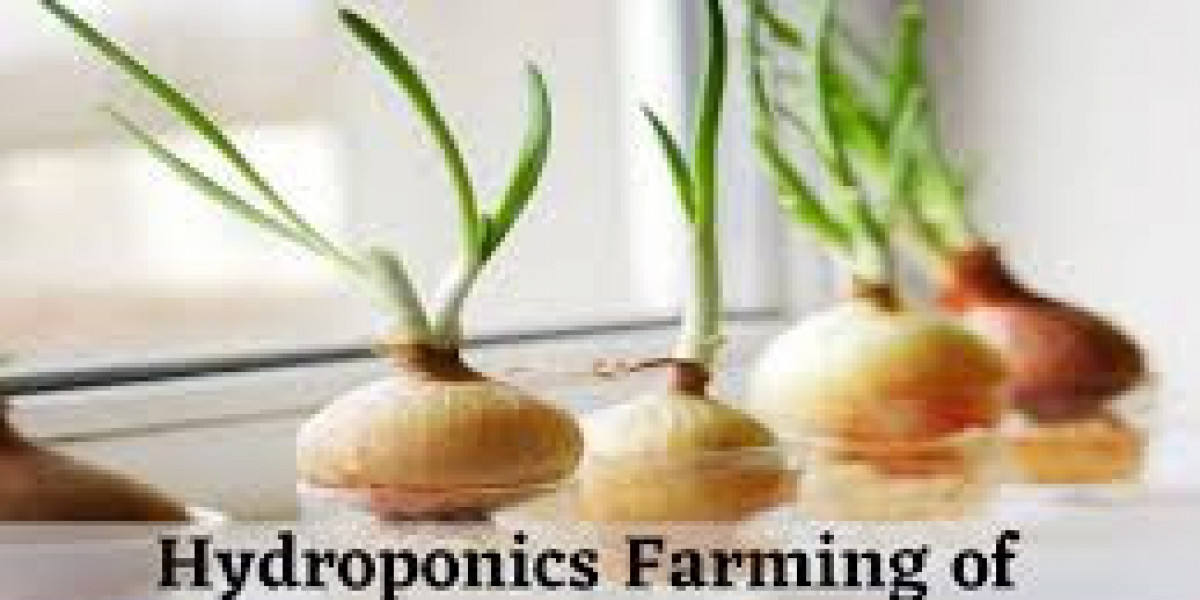Hydroponic gardening continues to revolutionize the way we grow vegetables, and onions are no exception. **Hydroponic onions** offer faster growth, cleaner harvests, and consistent yields, making them an excellent option for home gardeners and commercial growers alike. Whether you’re exploring hydroponics for the first time or expanding your indoor garden, understanding the key steps behind growing onions hydroponically will help you achieve success.
## **Why Grow Onions Hydroponically?**
Traditional soil-based onion farming depends heavily on weather, soil health, and rainfall. Hydroponics, however, eliminates these variables and provides a controlled environment ideal for root vegetables. By supplying nutrients directly to the roots in a water-based system, growers can enjoy:
* **Faster growth rates** thanks to optimized nutrient delivery
* **Year-round production** regardless of climate
* **Larger, more uniform bulbs**
* **Space efficiency**, especially when using vertical systems
* **Cleaner crops**, free from soil pests and diseases
These benefits make hydroponic onions an attractive choice for urban growers, indoor gardeners, and commercial hydroponic farms.
## **Best Hydroponic Systems for Onions**
Onions thrive in several types of hydroponic systems, but some work better than others depending on your setup:
### **1. Deep Water Culture (DWC)**
One of the simplest and most effective systems. Onion roots remain suspended in nutrient-rich oxygenated water. This promotes strong growth, especially during early development.
### **2. Nutrient Film Technique (NFT)**
Ideal for growers aiming for high efficiency. A thin film of nutrient solution continuously flows over the roots. This system supports rapid growth and excellent nutrient uptake.
### **3. Kratky Method**
A passive, low-maintenance setup perfect for beginners. Onions grown using the Kratky method require minimal monitoring, making it a cost-effective and simple entry point into hydroponics.
## **Best Onion Varieties for Hydroponic Growing**
Not all onions respond equally to hydroponics. The following varieties are known for performing exceptionally well:
* **Sweet onions** (like Walla Walla)
* **Green onions / scallions**
* **Red onions**
* **White onions**
Scallions are the easiest to grow hydroponically, while bulb onions take longer but reward growers with impressive yields.
## **Nutrient and Lighting Requirements**
Hydroponic onions need a nutrient solution rich in nitrogen during the early growth stage and higher potassium during bulb formation. A balanced NPK formula such as 3-1-4 or 2-1-2 works well.
Maintain a **pH of 6.0–6.5** for optimal nutrient absorption.
For lighting, use **12–14 hours of LED grow light** daily to mimic natural sunlight and encourage healthy growth.
## **Tips for Successful Hydroponic Onion Growth**
* Maintain stable temperatures between **65–75°F (18–24°C)**.
* Ensure proper oxygenation in root zones.
* Avoid overcrowding plants to allow space for bulbs to expand.
* Monitor water levels and nutrient concentration weekly.
* Harvest scallions early for continuous regrowth.
## **Final Thoughts**
Hydroponic onions are a rewarding crop that combines efficiency, sustainability, and high-quality yields. Whether you’re growing for personal use or building a commercial setup, learning the fundamentals will help you maximize results. For more hydroponic resources and supplies, growers often turn to **rochesterhydroponics.net** for support and equipment.
By adopting hydroponic systems, you can enjoy fresh, flavorful onions year-round with minimal space and effort.







